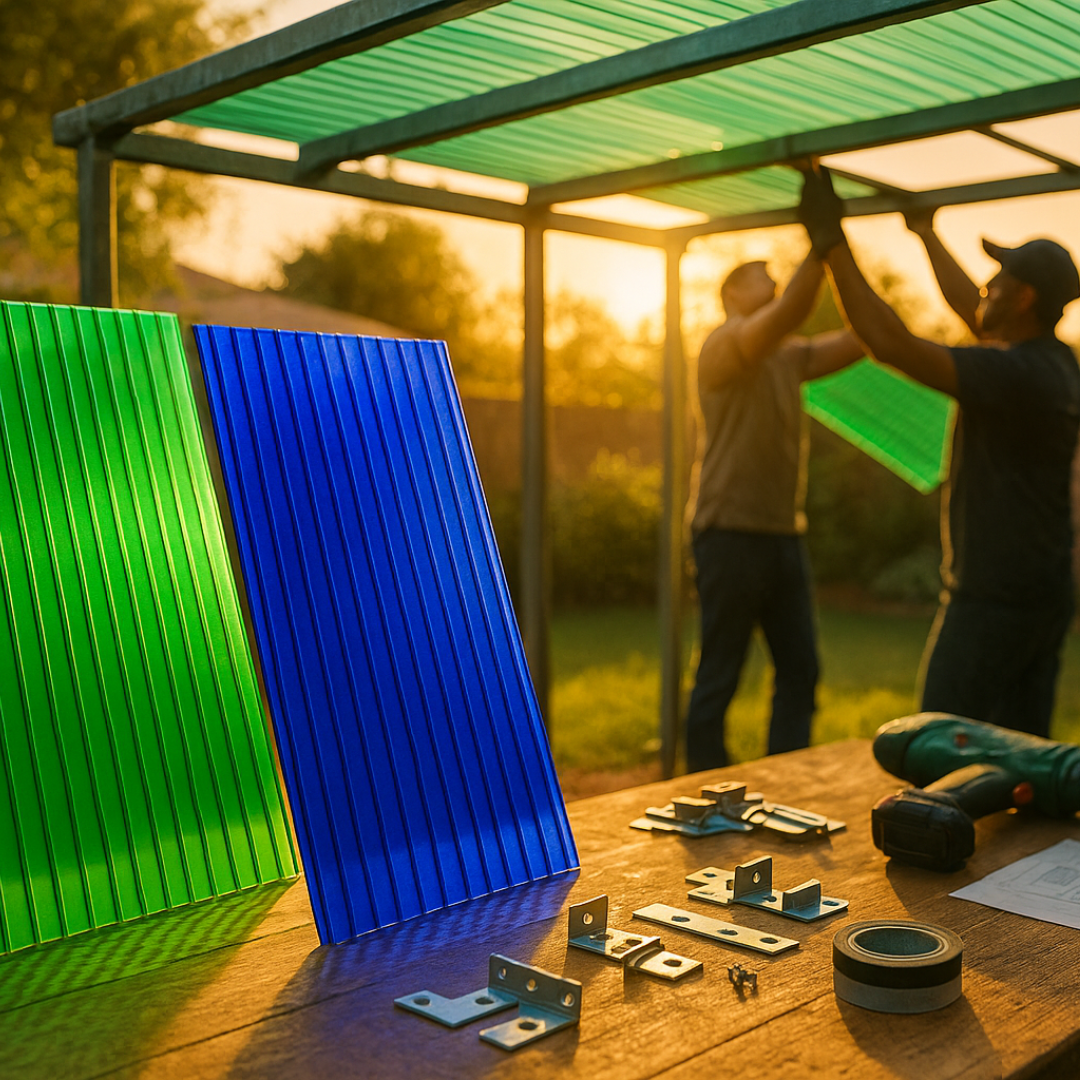Polycarbonate is often chosen for its strength and clarity—but one of its lesser-known advantages is its ability to resist heat. In kitchens, factories, and outdoor structures, polycarbonate performs better under high temperatures than many other plastics. However, like any material, it has its limits.
In this guide, we break down the heat resistance of polycarbonate and offer practical tips for getting the best performance in warm environments.
How Much Heat Can Polycarbonate Handle?
Standard polycarbonate sheets can typically withstand temperatures of up to 115°C (239°F) without deforming. In short bursts, they can tolerate even higher up to 130°C making them suitable for industrial use or areas exposed to heat fluctuations.
However, at prolonged exposure above this range, softening and warping may occur. Therefore, placement and insulation become critical when using polycarbonate in high-temperature environments.
Where It’s Commonly Used in Heat-Intensive Settings
Polycarbonate sheets are widely used in:
- Industrial safety shields near machinery
- Skylights and roofing where direct sun heats the surface
- Greenhouses and factory ventilation windows
- Kitchen partitions and sneeze guards near stoves or ovens
In many of these settings, temperature rises slowly but stays high throughout the day. Since polycarbonate resists melting and holds its shape better than acrylic, it becomes a safer choice for such applications.
How It Compares to Other Materials
Compared to acrylic, polycarbonate has superior heat tolerance. While acrylic begins to deform around 85°C, polycarbonate continues to perform well beyond 100°C. Glass, while more heat-resistant, is heavier and prone to breakage especially in environments with vibration or movement.
This combination of heat resistance, impact strength, and clarity makes polycarbonate the preferred choice in both domestic and industrial heat zones.
Avoiding Deformation: Tips for Better Results
To reduce the risk of warping or softening:
- Avoid placing sheets too close to direct flame or heating coils
- Allow for slight expansion during installation use flexible joints or mountings
- Choose thicker sheets for prolonged heat exposure (6 mm and above)
- Use tinted or UV-coated polycarbonate to reduce heat absorption from sunlight
- Consider ventilating areas where heat may build up behind enclosed polycarbonate panels
For kitchens or canteen areas, using polycarbonate sheets as splashbacks or dividers works well when placed away from direct burners.
Is It Food Safe and Fire Rated?
Polycarbonate is considered food-safe for indirect contact and is often used in buffet sneeze guards, transparent food bins, and dispenser panels. However, not all polycarbonate is fire-rated.
For factories or commercial kitchens, ask for sheets that meet UL94 or equivalent standards. Jeewa Plastic can guide you on what sheet grade is suitable for your environment.
Where to Buy Heat-Tolerant Polycarbonate Sheets in Sri Lanka
Jeewa Plastic supplies a variety of polycarbonate sheets suitable for both indoor and outdoor use. Whether you’re installing a sun-facing canopy or a heat-zone safety barrier, they provide sheets in different thicknesses and finishes including clear, bronze-tinted, and UV-protected options.
Sheets can be cut to size on request, ensuring a precise fit for your temperature-sensitive application.
The heat resistance of polycarbonate makes it a powerful material for both home and industrial settings. It performs better than most plastics under pressure, while remaining clear, durable, and safe to use. With the right installation and sheet thickness, it stands up well to kitchen heat, factory warmth, and tropical sun.
Explore polycarbonate sheet options at Jeewa Plastic and find a solution that holds strong even when temperatures rise.
